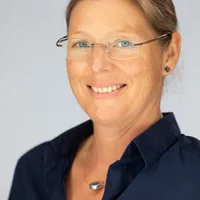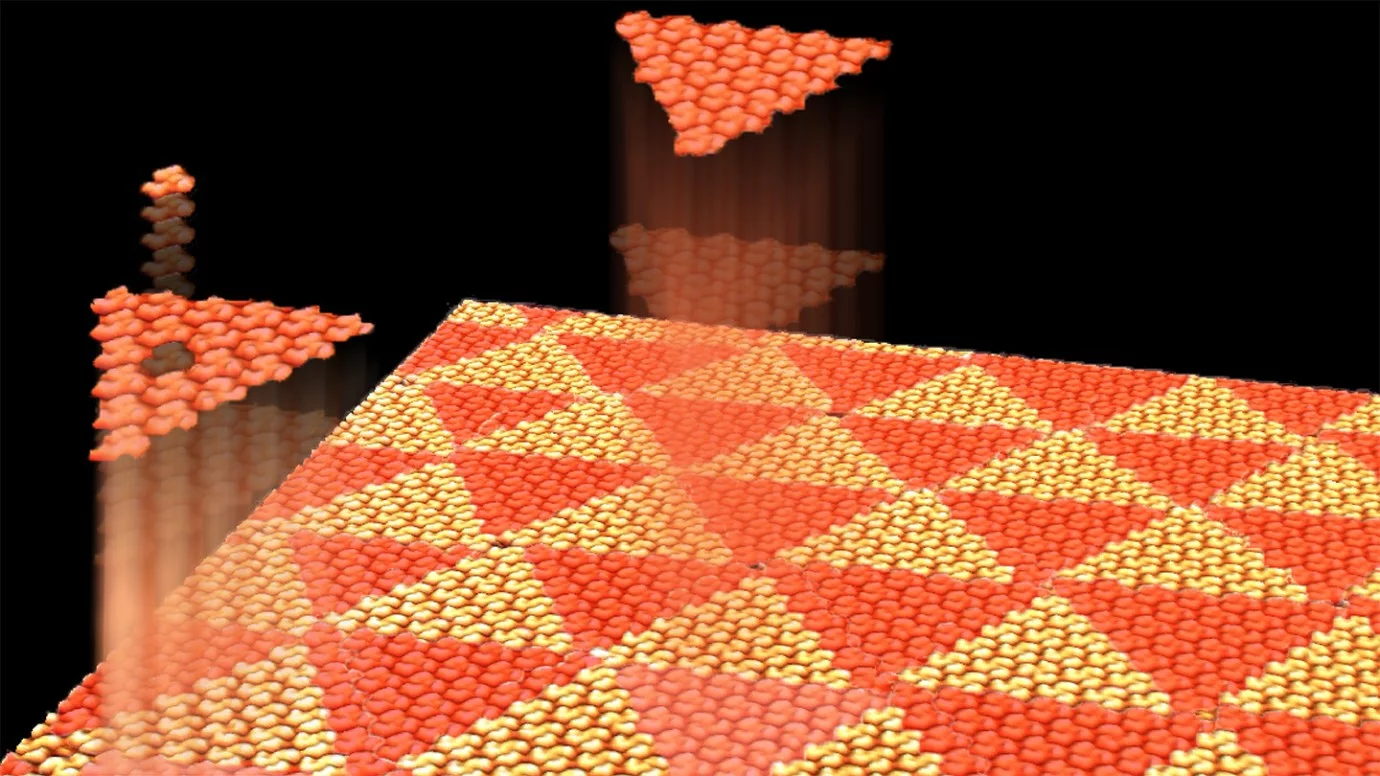For centuries, both mathematicians and floor designers have explored shapes that tile a plane without gaps. Some combinations of shapes can only be arranged in an aperiodic pattern, i.e., the arrangement never repeats. In 2023, Kaplan and colleagues amazed the mathematics world by demonstrating the "einstein tile" — a single shape that tiles the plane only in a non-repeating, aperiodic pattern. In 2024 it has been theoretically predicted that a 2D material based on this tiling would have exciting electronic properties.
Starting from 2018 onwards, when depositing molecules that resemble three-armed spirals onto a surface, Jan Voigt in the group of Karl-Heinz Ernst at the Swiss Federal Laboratories for Materials Science and Technology in Dübendorf found that these molecules grouped into triangular arrangements that never seemed to repeat.
Jan, Karl-Heinz and Christian Wäckerlin tried to make sense of this data for years: we created and discussed various tiling models and even cutout shapes from cardboard to assess different possible arrangements. During that time, Christian, who worked with Jan at Empa, moved to his current position as SNSF Eccellenza project leader at PSI and EPFL. Only with the publication of Kaplan’s work in 2023, the team realized that they had observed a sort of physical manifestation of the “einstein tile” in molecular self-assembly a few years ago.
Although it is not aperiodic in the strict mathematical sense as the einstein tile and most likely the molecular tiling could in-principle also form a repeating pattern, surprisingly periodic tiling was not observed in the experiment. The key to this riddle may be entropy, i.e., the sheer unlikeliness that a periodic arrangement can form: the molecule is very flexible and forms only weak intramolecular bonds, thus preferring to arrange in higher-entropy non-periodic patterns.
These findings have been published in Nature Communications [Nat Commun 16, 83 (2025)] and have been featured in ScienceNews and on YouTube.


